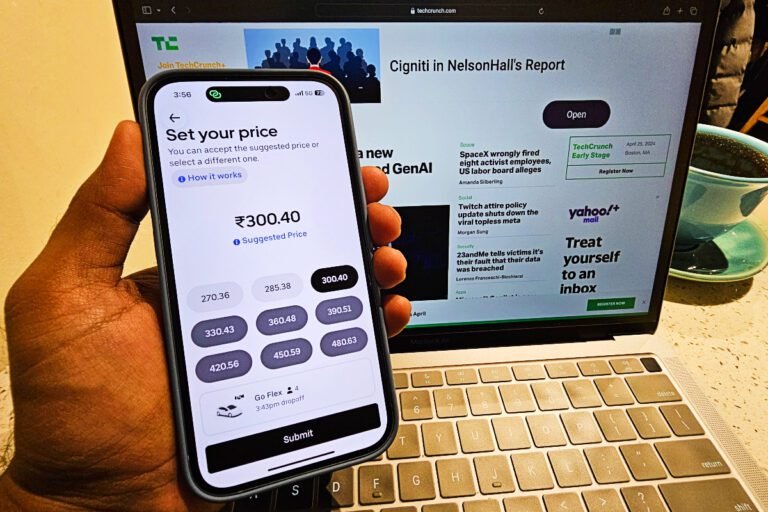Uber is quietly testing a flexible fare service in more than a dozen cities in India, a move that could help it expand its consumer base in the South Asian country and put pressure on rival ride-hailing platforms including Ola and inDrive .
The flexible pricing service, called Uber Flex, launched the India last October and has since expanded to more than 12 cities, including Aurangabad, Ajmer, Bareilly, Chandigarh, Coimbatore, Dehradun, Gwalior, Indore, Jodhpur and Surat, among others, TechCrunch has learned exclusively. Uber has confirmed that its flexible pricing service has been extended.
“We are currently piloting this feature in some of the Tier 2 and 3 markets in India,” an Uber spokesperson said in an email response to TechCrunch.
The service, which was initially launched for cabs and later expanded to auto-rickshaw rides, allows passengers to bid a specific fare for their ride. This is different from Uber’s typical dynamic pricing model, which moves up and down based on supply and demand and traffic in a particular area.
Uber Flex offers nine fare points — with a selectable default price — to allow riders to choose a fare of their choice to share with nearby drivers. Based on this fare, drivers can accept or decline the route.
Uber competitor inDrive, which operates in several Indian cities, allows riders to haggle the fare by manually putting in a specific price for their ride. However, many inDrive drivers in the country have complained about passengers offering them very low prices for their rides. inDrive has yet to address drivers’ concern about riders aggressively negotiating their fares, and has instead argued that its “unique approach ensures drivers are fairly compensated while passengers enjoy an affordable yet high-quality ride experience” .
“By offering drivers the ability to counter-offer passenger fares, inDrive promotes an option for the driver to raise the price if they want to,” inDrive APAC director Roman Ermoshin told TechCrunch in response to how inDrive is addressing the concerns of drivers that it is not moderately compensated.
“Drivers are often unhappy with the pricing on ride-hailing platforms as they yearn for fair compensation for their services. With an emphasis on fairness and transparency, inDrive displays a suggested price in the app, which is usually slightly lower than in other apps, and this is made possible by inDrive’s significantly lower fees for drivers (around twice competition, so the driver earns the same or more than the highest prices on the other apps).”
Uber is trying to solve the problem of too low fares that some inDrive drivers are experiencing by not allowing passengers to set a specific fare manually in the flexible pricing feature. It also puts a cap on the lowest fare.
Uber Flex allows riders to select their desired fare from available options. Image Credits: Jagmeet Singh / TechCrunch
The service is available for affordable Uber Go rides and Intercity cabs in some cities, while in some it is even offered for Premier cabs and auto-rickshaw rides. Passengers can pay their fare in cash or through digital payment. Additionally, while Uber’s flexible pricing model is available for various operations, the Raid-hailing giant does not apply it to all operations in a city.
Uber is testing Flex in other markets, including Lebanon, Kenya and Latin America. TechCrunch has learned that the company is also looking to test the new service model soon in metro cities in India, including Delhi and Mumbai.
Apart from Uber Flex, the San Francisco-based company is testing various services in India to meet local demand. These include Uber Taxis in Mumbai, which offers traditional taxi drivers an option in the city, and a Wait & Save model in cities such as Mumbai, Guwahati and Chandigarh to allow riders to bypass inflated prices and make pre-book a taxi when it is available at a cheaper price. fare.
India’s app-based cab market has recently expanded, with new players entering the urban transport space in recent months. Companies like BluSmart and Evera offer electric taxis, while Ola, Uber and inDrive have come on board with a large number of petrol cabs. Last year, bike taxi startup Rapido also started offering its taxi service in the country to expand its revenue and reach new customers.
However, Indian taxi drivers – regardless of the platform they work on – are struggling because relatively low compensation and lack of security. There is no clarity for many about whether they will stay in business when their current vehicles become obsolete.
